Susan McAdam writes:
I am sure that all of us have seen the results of professional artists and sculptors who work to reconstruct a face from the plaster cast of a skull. Some are shockingly realistic and quite beautiful in their representation. Others, however, are only passable and are not even very human looking. Since it’s all subjective, I was interested in what I could do using Blender instead of physical clay.
The big question for me was, could I come up with some process that would consistently produce a decent (if not great) result. Inspired by an older presentation given by Professor Nicholas Priniotakis (2017 Blender Conference), I decided to develop my own system for forensic facial reconstruction.
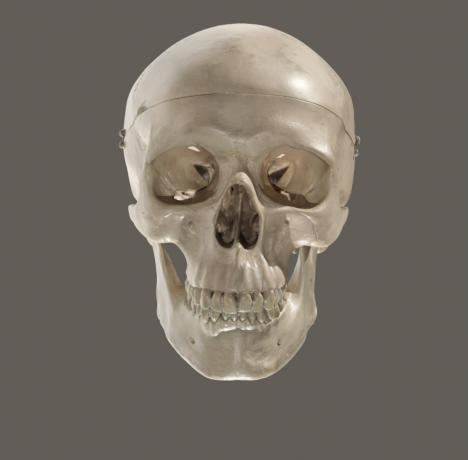
I started my project by studying anything I could on forensic facial reconstruction. I took online seminars and classes in human anatomy (especially the bones and muscles of the head and neck). I bought books and got acquainted with the standard methods of facial reconstruction. At the same time, I started looking for all reference materials that I could find that defined tissue depths as well as defining the different ethnic groups, gender, builds (fat or thin), nose morphology, and age expectations. While I will never claim any real expertise in the medical field, just by constantly studying the materials available, I began to get a decent feel for identifying the gender of a skull. The one thing that I found to be consistent was that whatever method people were using to build a face, they all had peg-like markers set on the skull.
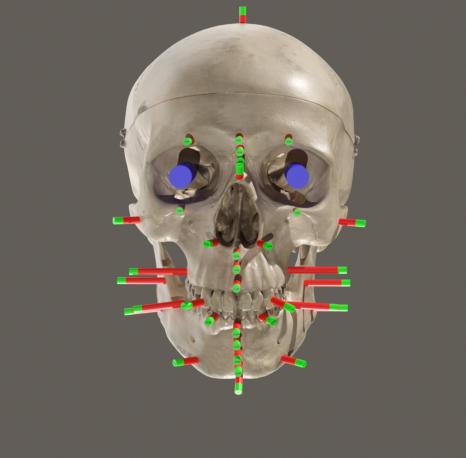
Normally, at this point, I would need to use photogrammetry to capture a model of the subject’s skull. For my project, unfortunately, that was not going to be possible. I did call someone connected to the local government run morgue and (of course) got nowhere. Ultimately, I found a realistic skull online through Sketchfab and began.
Before I started the reconstruction, I had already developed forms that I could use to identify the tissue depths and where to place my markers. See my example at the beginning of this article. After I identified all the marker sizes that would be needed. I opened the skull model in Blender and created all the pegs for defining tissue depth. In creating the right size markers, I set everything to millimeters and then added an extra five millimeters to the top for an easy reference point. The pegs ended up bright red with bright green tops. On the very top, I added the actual size of the peg so there would be no guess work.
As far as sizing the skull in Blender. I used a grid and fit the skull into the space set up for a standard head size. As long as all the sizing was consistent between the head and the pegs, I figured the end product would be as accurate as I could make it. I need to say that I am not a programmer or a sketch artist. It was me and Blender at this point and that was all I had.
One of the first things I noticed was that my studying of the head was nice, but not completely necessary. I’m sure physical sculptors would take exception, but I wasn’t recreating individual muscles to wrap around bones, I was building a face that would wrap around the entire skull with its markers. I had no intention of starting a face completely from scratch, so I looked at a variety of heads from models that I could import and lay over the skull.This is where it was both successful and funny at the same time. I chose my model and then, once I placed it over the top of my test skull, the rest of the process was about lining up markers and sculpting. The reason that I said this was a funny experience for me is that I thought I had the skull of a contemporary man. As you can see from the final result, he was a much older human – not contemporary at all. My process was successful. It produced an accurate depiction. In real life this person’s face was probably a bit different, but the point was to take the skull and give him a reasonable face. Once I sculpted the head around the skull, I was pleasantly surprised at what I got.
What do you think?
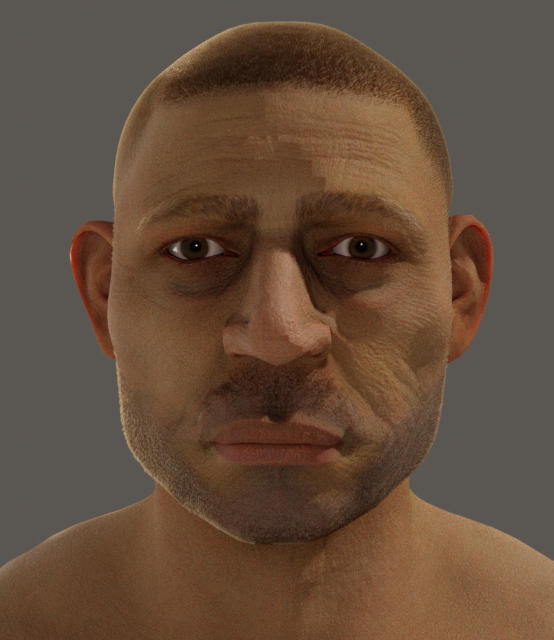

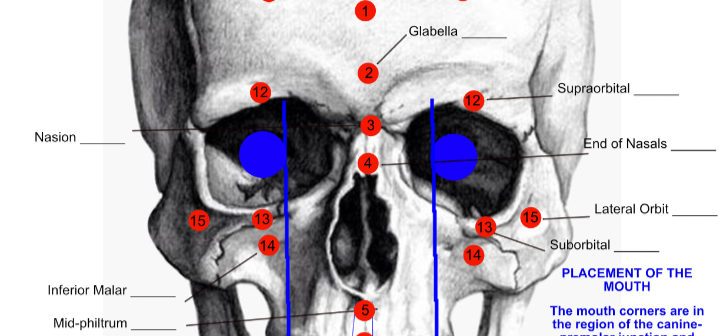
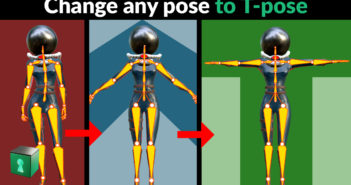

3 Comments
Hello, very interesting work and surely a lot of effort went into it. A few questions arise:
- when you say "he was a much older human, not contemporary at all" do you mean a different hominin species (i.e. any Homo species before sapiens) or is this implying morphological changes in the face have taken place in the last thousands/hundreds of years?
- If the latter applies, have you found any papers supporting this claim and could you please cite them?
- Regarding soft tissue depths, did you use global data, or a specific population? Could you refer to the study used and explain what was the process to decide which population was best for this particular skull?
- regarding the landmarks used, which definitions and nomenclature was followed?
- when stating a reconstruction is accurate, what can be used to prove it?
Thanks in advance! I am really interested in forensic facial reconstruction and although I believe your results are beautiful I think it is important to share these type of details to avoid confusion and increase standardization in a field that is very related to human identification in real forensic scenarios.
Best
I also want to learn facial reconstruction..
Alright, first thing I'll say is that I think I actually have a degree in Forensic Art and Facial Imaging from one of the only accredited schools on the planet that teach these techniques.
I'll say first off it isn't really subjective-> second I don’t believe you have a degree so unless you have experience you could be considered essentially a hack, or not even that.
I would suggest that you at least reference what tissue depths you're using and what technique. I see you’re using some material that could be referenced, which if you don’t cite it then you leave yourself open to copyright infringement, which you have basically done here.
Also, some may consider it inappropriate to display a skull in this way. As forensic artists, we have a vested interest in maintaining principles of ethical display of cadaveric or bony material (regardless of local laws). Such as to honor the mistakes (in some cases where repatriation has been necessary) that have been made in the past by former anatomists, government leaders, etc.
If you’d like to make a contribution, I’d suggest getting a degree in the field, or getting involved by joining one the Facebook forensic art groups.